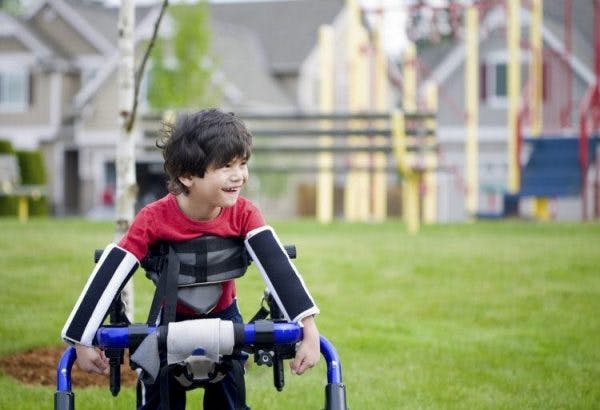There are many interesting facts about cerebral palsy that can help individuals understand their condition and improve their quality of life. While CP is a common motor disability, many people misunderstand exactly what it is.
To help you understand what cerebral palsy is and how it can affect your daily life, this article will share 9 interesting facts.
9 Interesting Facts About Cerebral Palsy
These facts will help you understand what cerebral palsy is and how to manage it.
1) You Cannot Get Cerebral Palsy as an Adult
Cerebral palsy is a motor disability caused by damage to the brain before or during birth, or shortly after birth. Sometimes, milder forms of cerebral palsy may go unnoticed until the child demonstrates developmental delays.
Any sort of motor disability that occurs in later childhood or adulthood is not considered cerebral palsy. Similarly, you cannot “catch” cerebral palsy at any age; it is not contagious.
2) Cerebral Palsy Does Not Directly Affect Cognitive Function
Cerebral palsy is a motor disorder, meaning that it specifically affects movement.
Although 50% of individuals with cerebral palsy have a co-occurring intellectual disability, an intellectual disability is not caused by the same source of brain damage as cerebral palsy.
Intellectual disabilities are considered associated conditions of cerebral palsy because they commonly co-occur but are not directly related.
3) Cerebral Palsy is Not Hereditary
Cerebral palsy is not hereditary, so the chances of an adult with cerebral palsy passing the motor disability down to their child is the same as an adult without cerebral palsy.
Rather, CP can be attributed to:
- bleeding in the brain
- infections
- seizures
- premature birth
- traumatic injury to the head
4) Cerebral Palsy is the Most Common Childhood Motor Disability

Cerebral palsy is an umbrella term, meaning that it describes a wide range of motor impairments at various severities. As a result, every case of cerebral palsy is unique and requires a personal management plan.
While cerebral palsy is the most common, other motor disabilities that can occur in childhood include muscular dystrophy and dyspraxia.
5) There are 4 Different Types of Cerebral Palsy
Cerebral palsy can be classified into 4 different types:
- Spastic Cerebral Palsy (characterized by stiff movements and caused by damage to the motor cortex)
- Dyskinetic Cerebral Palsy (characterized by uncontrollable movements and caused by damage to the basal ganglia)
- Ataxic Cerebral Palsy (characterized by poor balance and coordination and caused by damage to the cerebellum)
- Mixed Cerebral Palsy (a combination of 2 or more types of CP)
6) Individuals with Cerebral Palsy Can Improve Motor Functions
Cerebral palsy is a life-long condition, meaning that the brain damage that causes it will not go away over time. However, the brain has neuroplasticity, which is the ability to rewire itself and reassign affected functions to undamaged areas of the brain.
Through intensive training that focuses on high repetitions, individuals with cerebral palsy can promote neuroplasticity and improve their motor functions.
Additionally, early intervention is key to improving motor functions because children’s brains have greater levels of plasticity than adult brains.
7) Cerebral Palsy Can Affect the Face
Cerebral palsy can affect all areas of the body. It can affect both sides (diplegia), just the legs (paraplegia), only one side (hemiplegia), all arms and legs (quadriplegia), or even just one limb (monoplegia). Therefore, it shouldn’t be surprising that it can also affect your oral muscles.
When CP affects the muscles in the face, it can affect one’s ability to speak, chew, and swallow.
It’s important to keep in mind that just because someone with cerebral palsy cannot speak, does not mean they can’t understand you. Instead, they may just struggle to control their oral muscles (dysarthria). Many individuals with dysarthria know exactly what they want to say but are unable to verbally express themselves and must rely on alternative methods of communication.
8) The Effects of Cerebral Palsy Can Worsen If Not Properly Managed

Cerebral palsy is not a degenerative disorder, and brain damage will not worsen over time. However, secondary effects of cerebral palsy such as spasticity (high muscle tone) can progress if left unmanaged.
If spasticity becomes severe and continues to progress, it can significantly restrict movement, cause pain, and disrupt sleep.
Some of the best ways to manage cerebral palsy include:
- Physical Therapy (to stretch and strengthen muscles, and promote neuroplasticity through exercise)
- Occupational Therapy (to improve functional independence and fine motor skills through activities of daily living)
- Speech Therapy (to strengthen oral muscles, improve speech and language skills, or learn alternative communication methods)
- Medications (to relieve pain, regulate neurotransmitter levels, improve quality of sleep, reduce the occurrence of seizures, etc.)
- Botox injections (to block nerve signals that cause spasticity)
- Orthotics (to promote proper form and alignment)
9) Many People with Cerebral Palsy Can Walk
Although cerebral palsy almost always affects at least one leg, 2 in 3 people with CP are able to walk.
Assistive devices like walkers and crutches can help individuals with CP be more mobile, active, and independent.
Many children with CP learn how to walk with abnormal gait patterns such as tip-toeing, scissoring, and crouch gait because of spasticity. Abnormal walking patterns are caused by spasticity that pulls the legs into a certain position. Because the muscles cannot voluntarily relax, movements appear uncoordinated and stiff.
Abnormal walking patterns can be improved through intensive physical therapy that focuses on:
- lengthening tight muscles to increase range of motion
- strengthening underused muscles to inhibit spastic muscles
- reducing the excitability of spastic muscles by exercising them
Cerebral Palsy Facts: Key Points
Every case of cerebral palsy is unique, and everyone will experience different motor impairments and associative conditions. By taking a personalized approach to rehabilitation and focusing on each person’s specific motor impairments and secondary complications, individuals can significantly improve their functional independence and quality of life.










